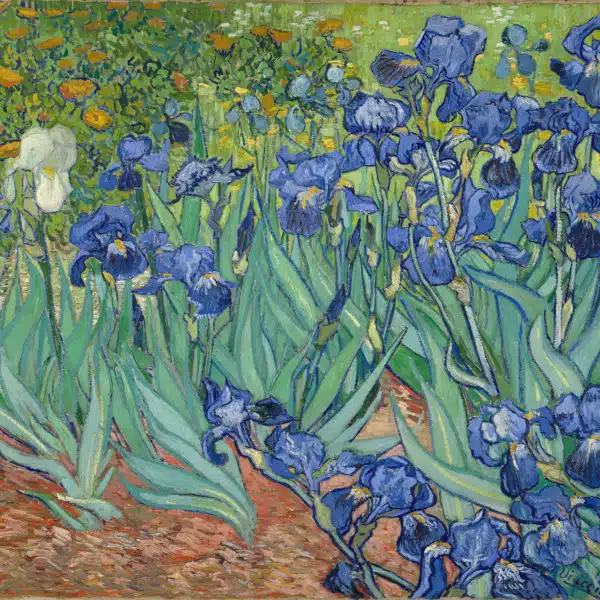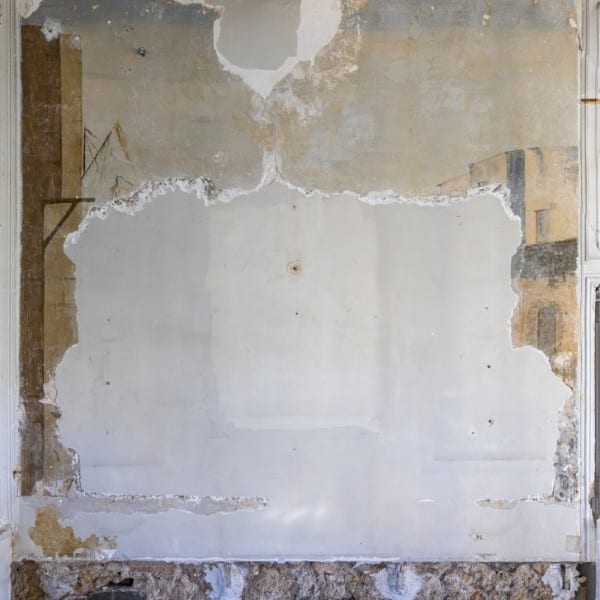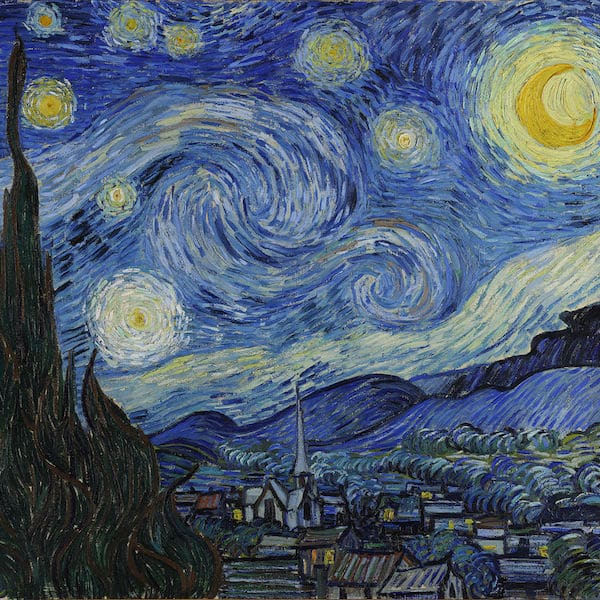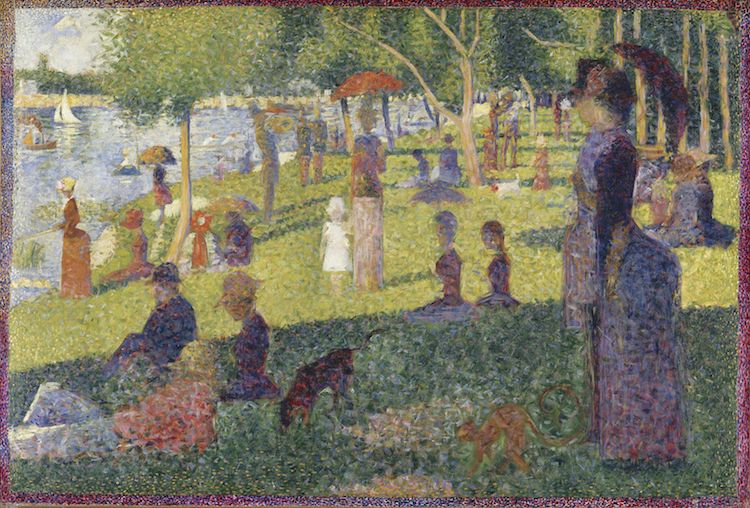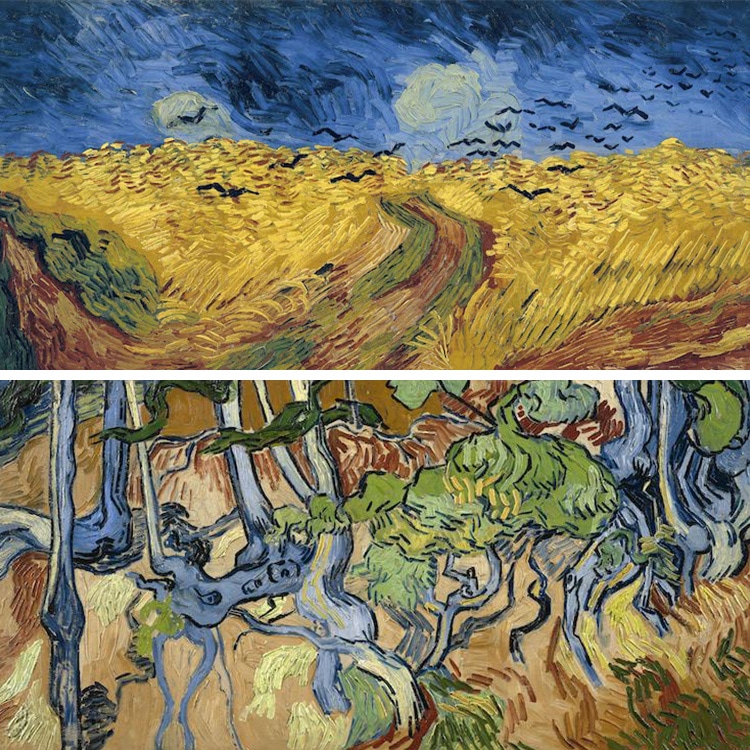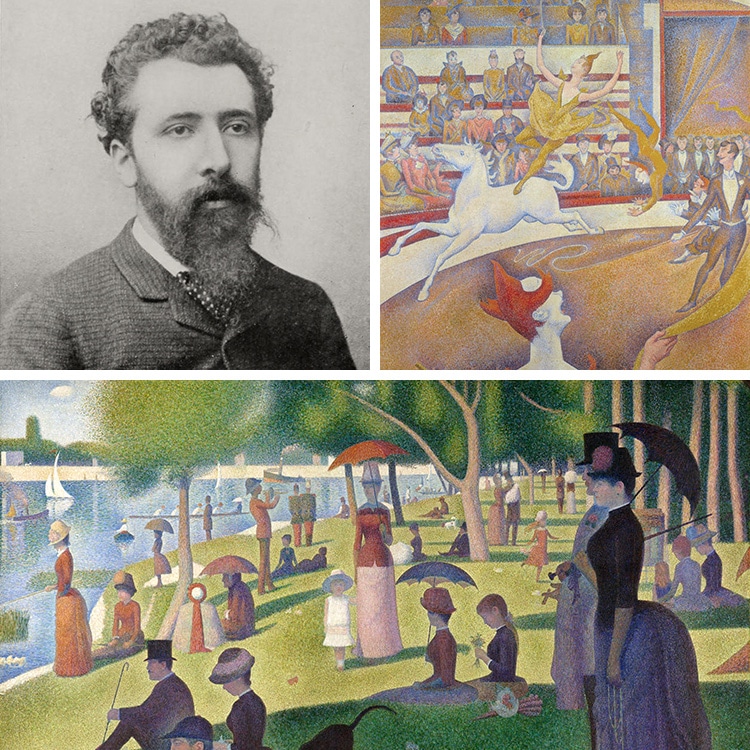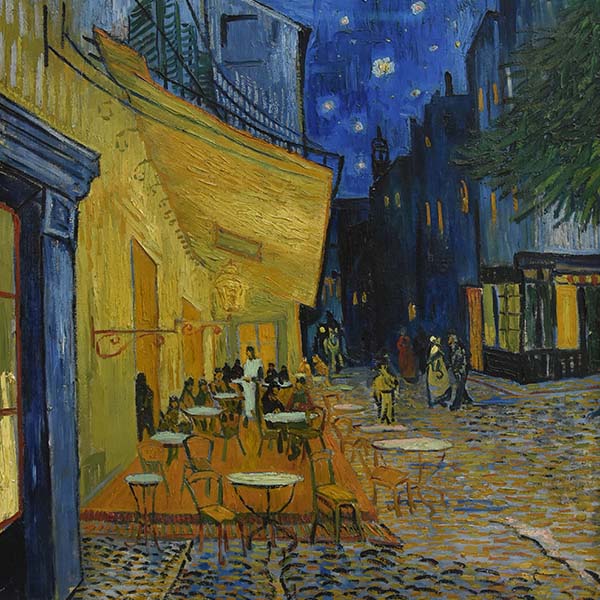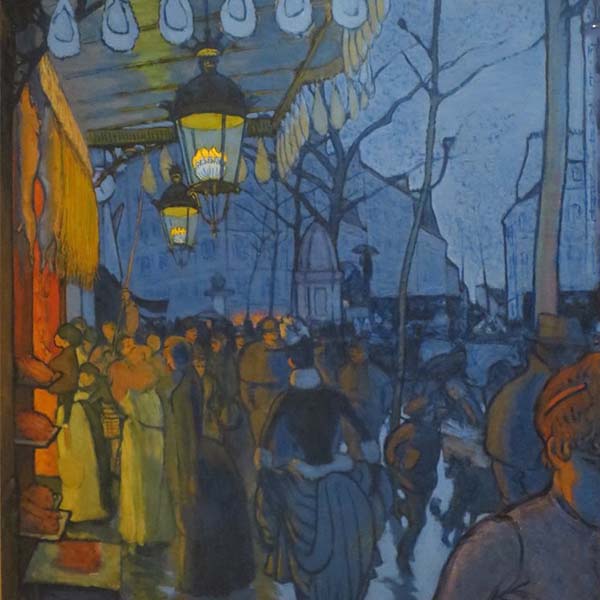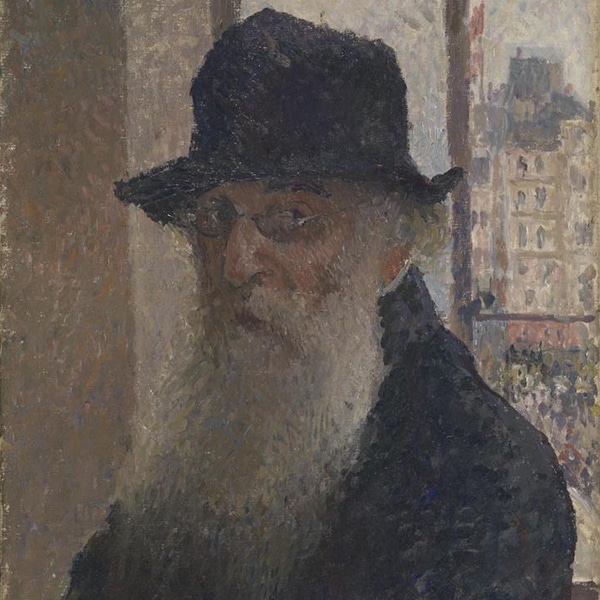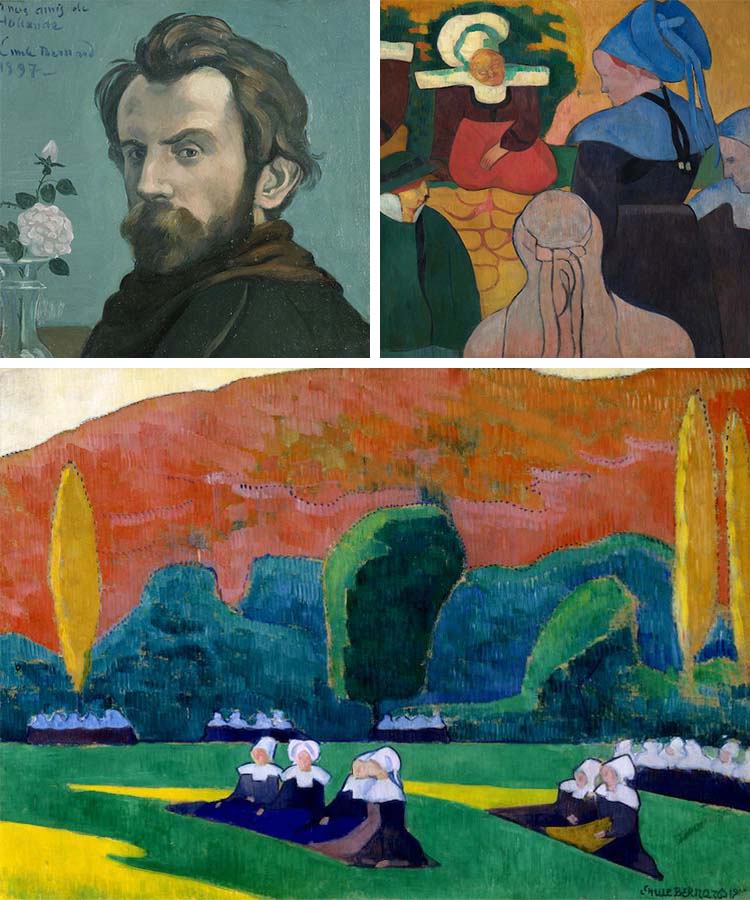
After the airy paintings of Impressionism came a bolder, multi-faced art movement called Post-Impressionism, which focused on color and painterly brush strokes. It is best remembered for the art of Vincent van Gogh and Paul Gauguin, who helped develop the style in the 1880s and 90s. However, working alongside these masters was a lesser-known painter who had a lasting effect on Gauguin and the Post-Impressionist style—Émile Bernard.
By the time he was 18, this French-born artist had developed an original aesthetic and possessed strong ideas about avant-garde painting. When Bernard encountered Toulouse-Lautrec, Gauguin, and then later, Van Gogh, he joined them in their creative pursuits by exchanging letters and works of art, and finding spaces to exhibit their paintings. During this time, he also helped found Cloisonnism and Synthetism, two major sub-styles of Post-Impressionism. But regardless of his close connection with all of these major figures and movements, Bernard never achieved the same level of fame as his peers, and faded from the spotlight when he was in his 30s.
Here, we will take a look at Émile Bernard's life and explore his colorful body of work.
Who was Émile Bernard?
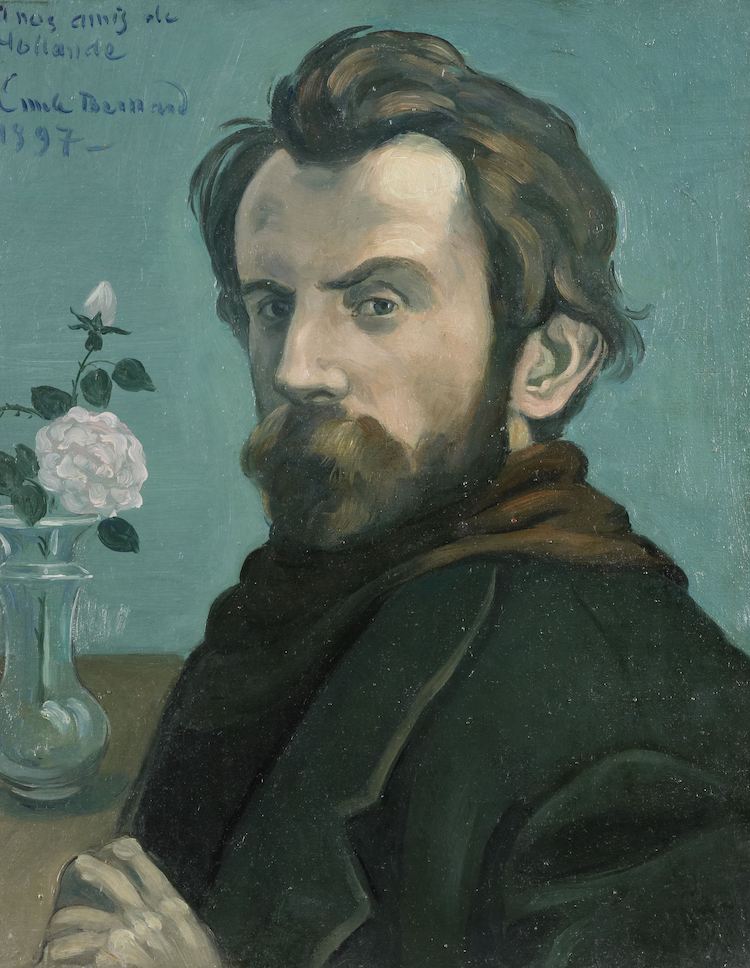
Émile Bernard, “Self-Portrait,” 1897 (Photo: Wikimedia Commons, Public domain)
Émile Bernard (1868–1941) was a French artist and writer who helped develop Post-Impressionism and two of its styles (Cloisonnism and Synthetism) during the late 19th century. Originally from Lille, he moved to Paris as a teenager, where he first attended École des Arts Décoratifs in Paris and then joined Atelier Cormon—the same studio attended by Henri de Toulouse-Lautrec and Louis Anquetin.
Bernard left the studio and Paris when he was 18 and went traveling (a habit he would frequently revert to between creative periods). Over the course of the next few years, he attended more art schools and befriended several up-and-coming Post-Impressionists. Despite his young age, Bernard was one of the pivotal artists who cultivated a clear aesthetic goal for his art before Gauguin and Van Gogh. He is frequently described as a major influence on Gauguin's art.
Friendships with Other Artists
Paul Gauguin
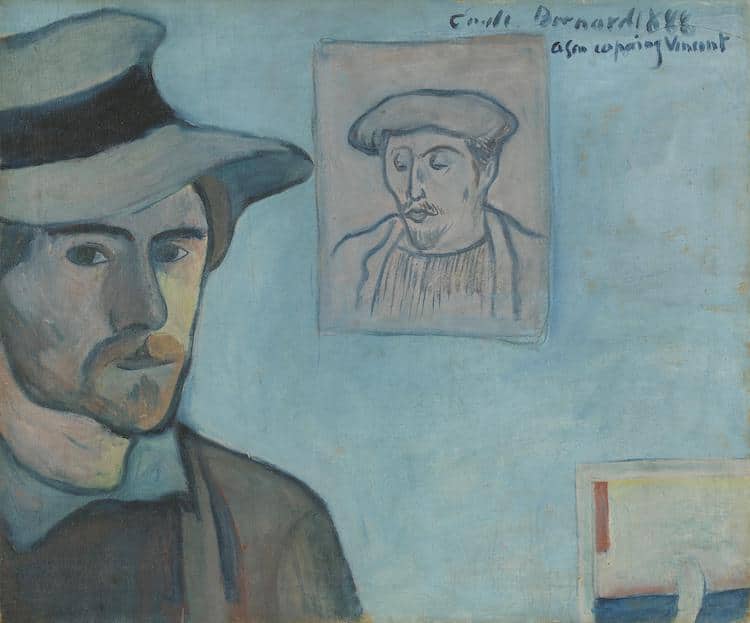
Émile Bernard, “Self-Portrait with a Portrait of Gauguin,” 1888 (Photo: Wikimedia Commons, Public domain)
Bernard first came across French artist Paul Gauguin (1848–1903) after living in Pont-Aven in 1886. At the time Bernard was 18 and Gauguin was 38, but the older artist wrote that he was impressed at Bernard's highly original ideas about painting.
Over the course of the next few years, the two friends would remain in close contact. Bernard's desire to create art that was founded in simplicity, not individuality, and accessible to everyone resonated with Gauguin. Some of Bernard's painting's most identifying characteristics can be found in Gauguin's work, such as bold, flat areas of color and an emphasis on line.
Vincent van Gogh
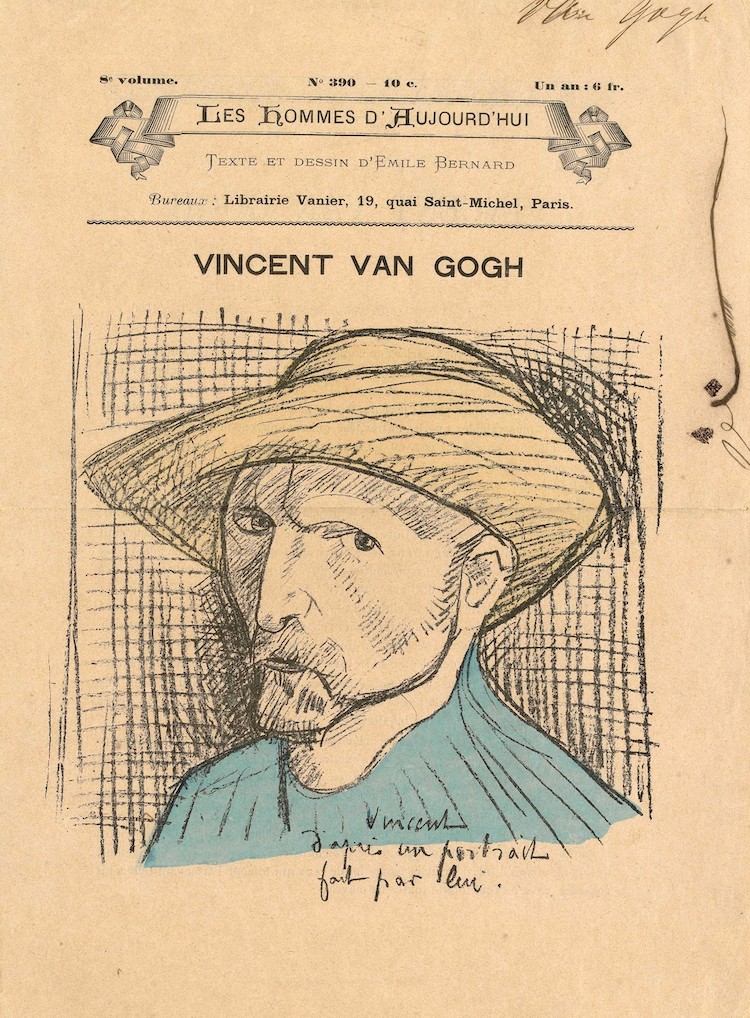
Émile Bernard, “Drawing of Vincent van Gogh,” 1892 (Photo: Wikimedia Commons, Public domain)
A year after Bernard's first meeting with Gauguin, he met Vincent van Gogh (1853–1890), who was 11 years his senior. They attended a private art school called Académie Julian, where Van Gogh became immediately enthusiastic about Bernard's style.
Since Bernard, Gauguin, and Van Gogh were all acquainted and interested in each other's art, they formed a creative relationship, sending letters and art to one another for long stretches of time. In one exchange, Bernard sent his painting Breton Women in a Green Pasture, and Van Gogh sent back a copy made up of more earthy tones.
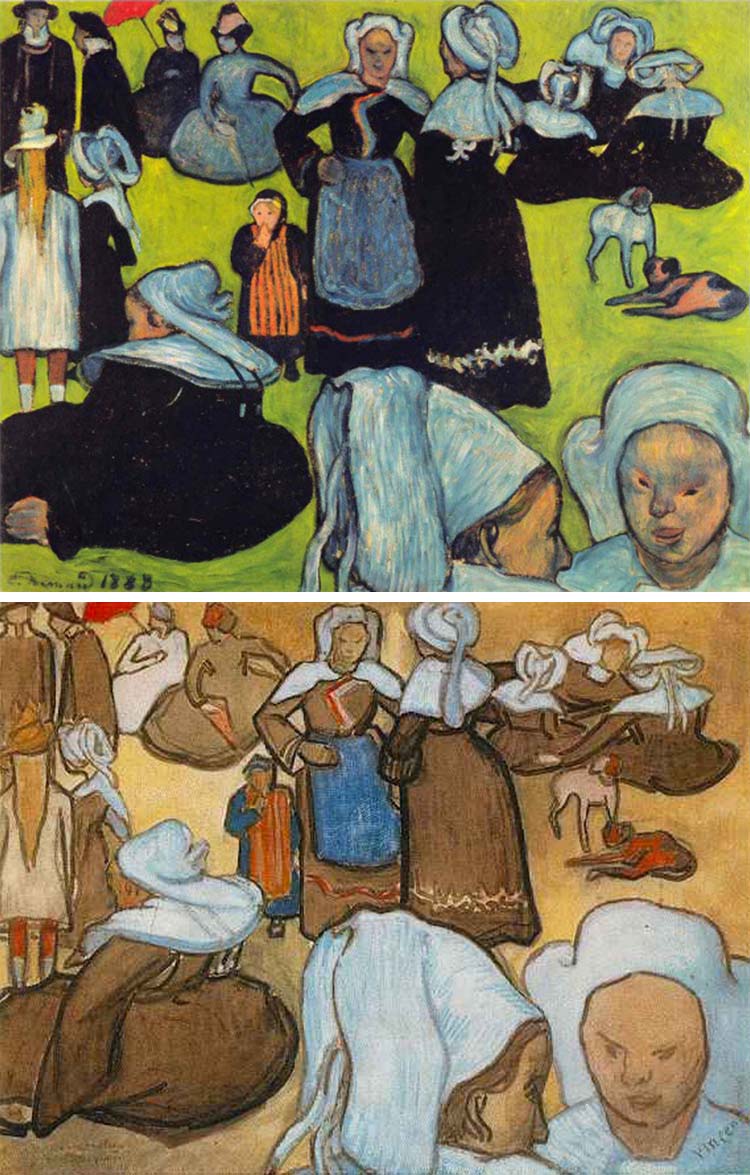
Top: Émile Bernard, “Breton Women in a Green Pasture,” 1888 (Photo: Wikimedia Commons, Public domain)
Bottom: Vincent van Gogh, Copy of Bernard’s “Breton Women in a Green Pasture” called “Breton Women and Children,” 1888 (Photo: Wikimedia Commons, Public domain)
Art Movements
Post-Impressionism
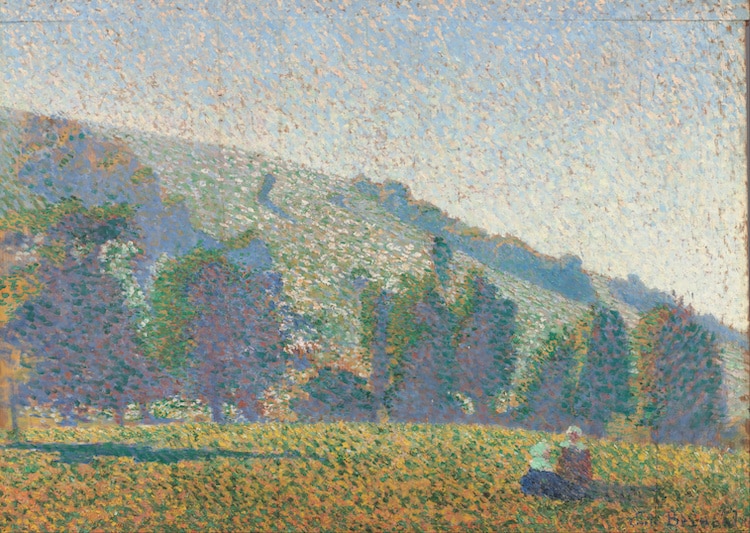
Émile Bernard, “Two Breton Women in a Meadow,” 1886 (Photo: Wikimedia Commons, Public domain)
The young Bernard began his artistic path in the beginnings of the Post-Impressionist movement. However, unlike other artistic periods which can be described as having one standardized style, this movement included several different styles. The only features that these sub-styles had in common was an emphasis on color and expressive brushstrokes.
Likewise, Bernard's early work spans a variety of influences and experiments, including a period of pointillism—a technique which employs numerous colorful dots to create one cohesive work.
Cloisonnism
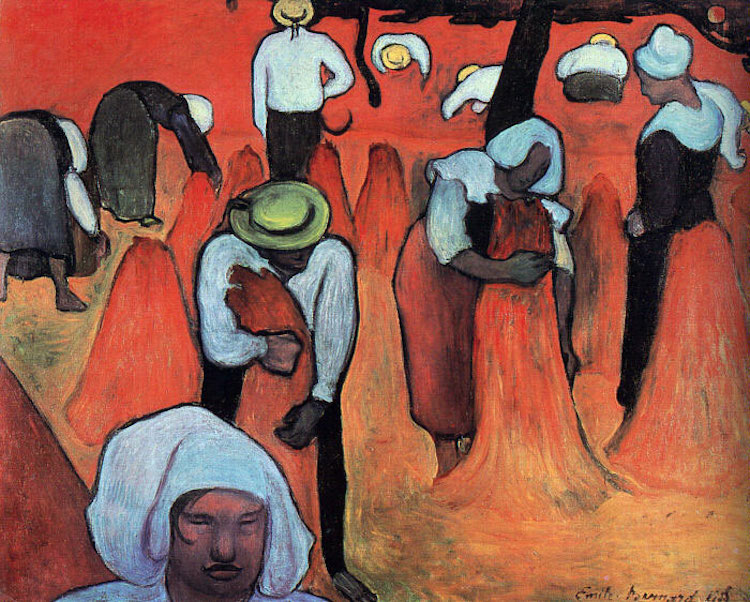
Émile Bernard, “Buckwheat Harvesters,” 1888 (Photo: Wikimedia Commons, Public domain)
Cloisonnism is a Post-Impressionist style characterized by flat areas of color and dark linework. Its name derives from the decorative technique cloisonné, which describes metalwork objects that contain colorful glass within wire frames. In addition to color and line, this style also employed a lack of classical perspective—which led to a tapestry-like effect—and simplified forms.
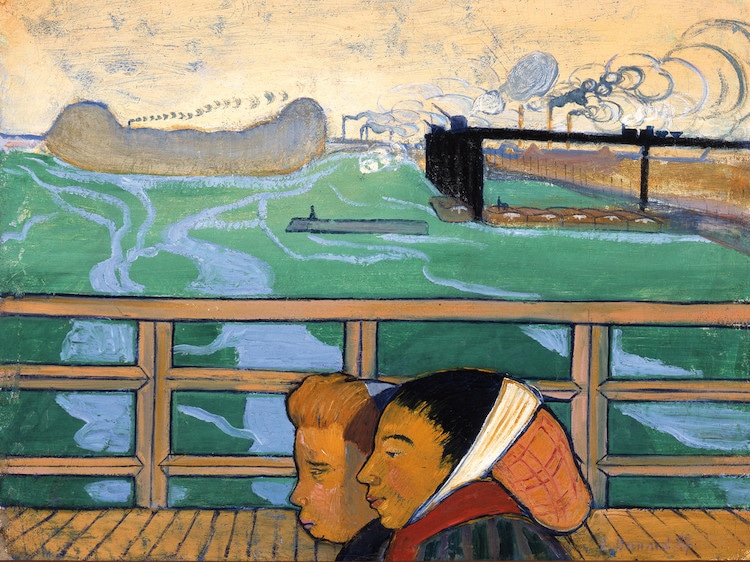
Émile Bernard, “Two Women on the Bridge of Asnières,” 1887 (Photo: Wikimedia Commons, Public domain)
Bernard and Gauguin, as well as artists Anquetin and Serusier, were at the center of this style's origin. Its influence can be seen in some works by Van Gogh as well.
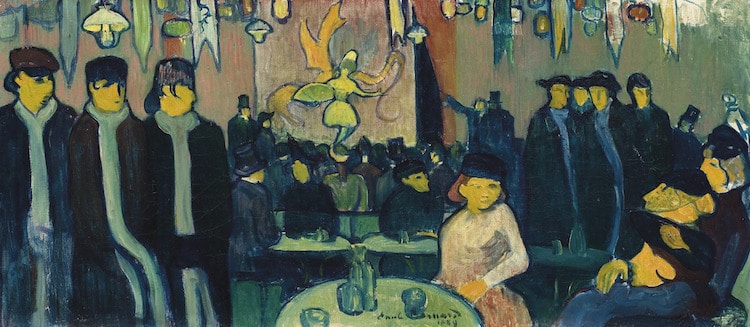
Émile Bernard, “Le Tabarin ou Cabaret à Paris or At Le Tabarin,” 1888-89 (Photo: Wikimedia Commons, Public domain)
Synthetism
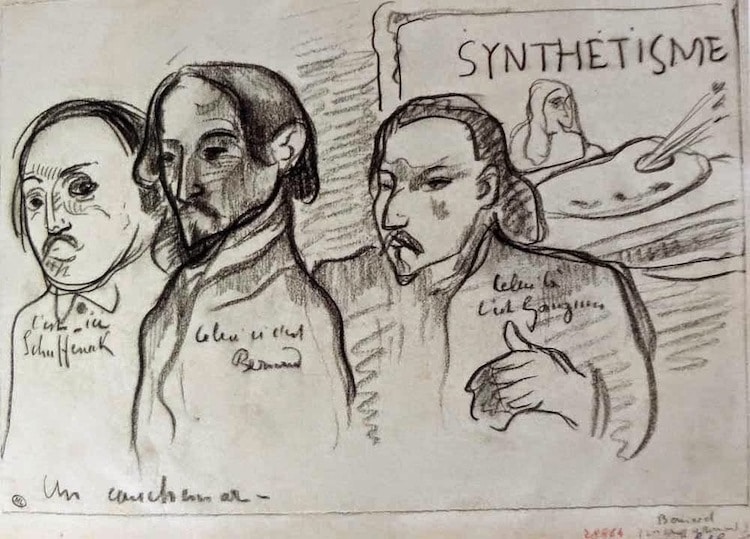
Émile Bernard, “The Volpini Exhibition (Left to Right: Drawing of Émile Schuffenecker, Émile Bernard, Paul Gauguin),” c.1889 (Photo: Wikimedia Commons, Public domain)
After Cloisonnism, Bernard and Gauguin helped found another Post-Impressionist style called Synthetism. While quite similar in feeling to Cloisonnism, Synthetism can be distinguished from its predecessor for a slightly more subdued appearance. It features flat areas of color and simplified forms but lacks the same thick dark lines that characterize works of Cloisonnism.
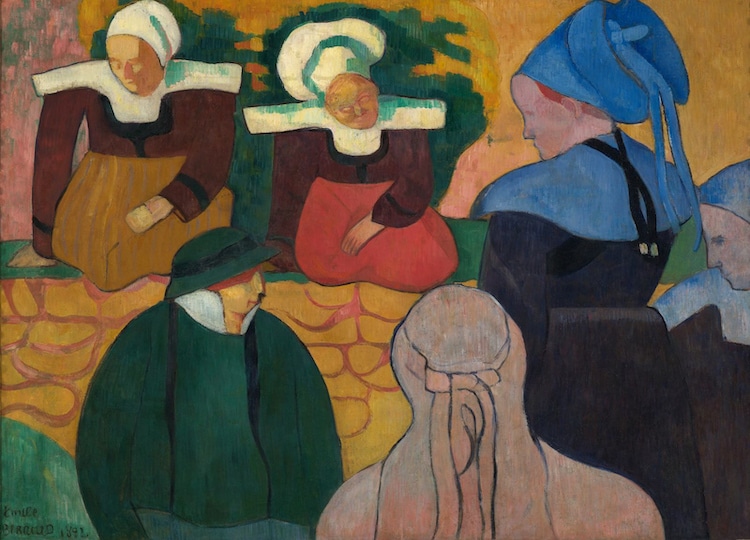
Émile Bernard, “Breton Women at a Wall,” 1892 (Photo: Wikimedia Commons, Public domain)
Painter Marice Denis described Synthetism: “It is well to remember that a picture before being a battle horse, a nude woman, or some anecdote, is essentially a flat surface covered with colors assembled in a certain order.”
Bernard and Gauguin displayed their Synthetist paintings at The Volpini Exhibition in 1889, which was hosted by the Café des Arts in Paris. At the time, Post-Impressionist art still lacked respect, and the exhibition was snubbed by art critics.
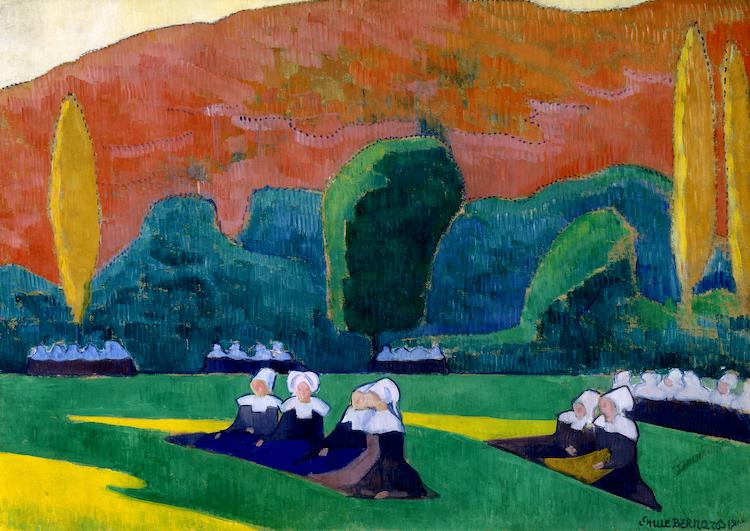
Émile Bernard, “Breton Women Attending a Pardon,” 1892 (Photo: Wikimedia Commons, Public domain)
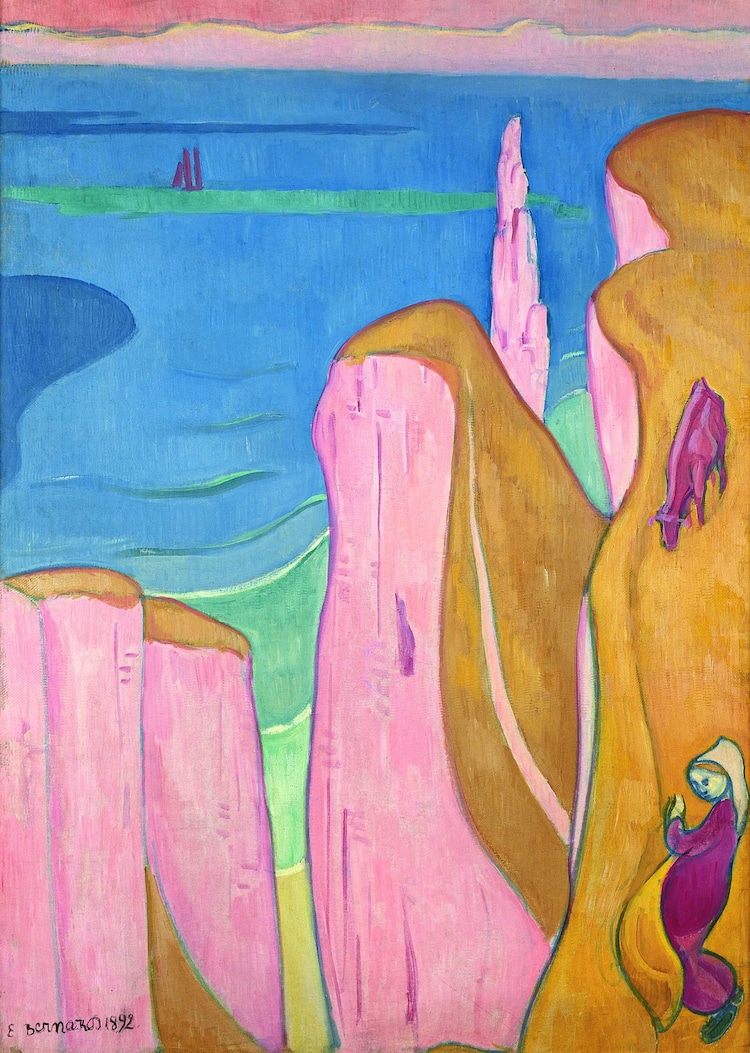
Émile Bernard, “Untitled,” c.1892 (Photo: Wikimedia Commons, Public domain)
Related Articles:
Exploring the Vision and Diverse Styles of Post-Impressionism Pioneers
Why Post-Impressionist Painter Paul Cézanne Is Known as the “Father of Modern Art”
6 Fascinating Facts About Post-Impressionist Pioneer Henri de Toulouse-Lautrec
The Controversial Life and Art of Post-Impressionist Painter Paul Gauguin











































































